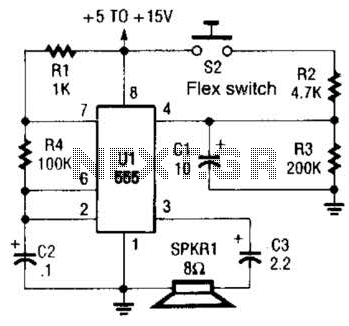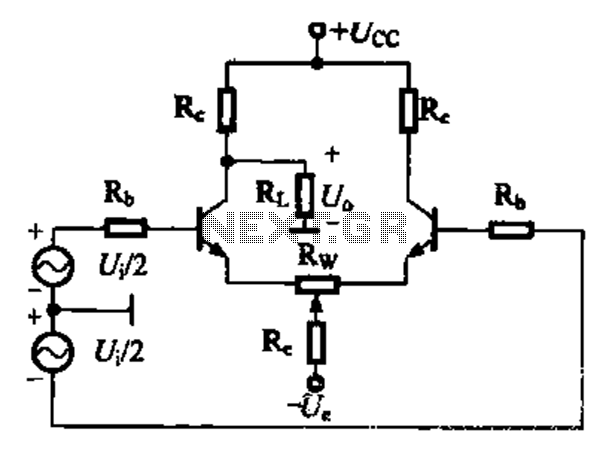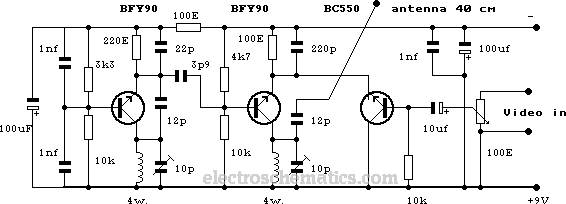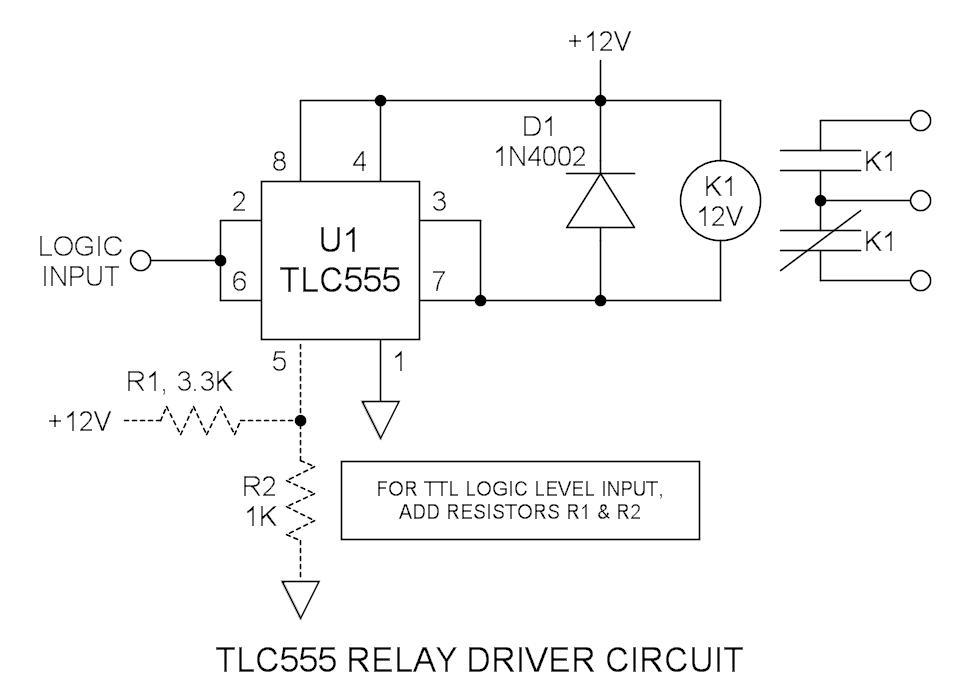
lan tester circuit

This LAN tester circuit was originally designed by Vassilis Stergiopoulos. It features two optional designs. The first design utilizes two main integrated circuits: the timer IC555 and the decade counter 4017. The second design is based on the microcontroller chip ATtiny2313, although other microcontrollers may also be compatible. Additionally, a DC battery tester circuit designed by Matthew B. is capable of measuring DC battery voltages from 1.5V to 9V. The component parts list includes: R1 = 18K Ohm, R2 = 240 Ohm, R3 = 8.2K Ohm, R4 = 3K Ohm, R5 = 10 Ohm, and M1 = Panel Meter. Furthermore, a remote control tester circuit is presented, which is a simple and cost-effective solution for verifying the basic operations of an infrared remote control unit. This tester is designed around the infrared receiver module TSOP1738, and it indicates the operation of the remote control with an audible tone. Another mentioned circuit is a low resistance connection tester, which can be employed to test cables or wires, solder joints, and other types of connections with resistance values between 0.25 and 4 ohms. This simple circuit uses a 741 operational amplifier in differential mode as a continuity tester, measuring the voltage difference between the non-inverting and inverting inputs. A flame, gas, and smoke detector circuit for fire alarms is also described, which can be integrated with an alarm circuit. The output of this circuit is a relay that activates or deactivates the alarm. The schematic diagram and a list of required components are available for download. Many security systems utilize a closed loop of wires and switches, which triggers an alarm when a door or window is opened. However, a potential vulnerability exists, as an intruder may tamper with the system by shorting the loop and later return to commit burglary.
This LAN tester circuit, as designed by Vassilis Stergiopoulos, is versatile and can be implemented in two distinct configurations. The first configuration leverages the timer IC555 in conjunction with the decade counter 4017, facilitating a straightforward approach for testing LAN connections. The IC555 timer operates in astable mode to generate pulse signals, while the 4017 decade counter sequentially counts these pulses, providing a visual indication of the connection status through LEDs or other output devices.
The second configuration employs the ATtiny2313 microcontroller, offering a more advanced and programmable solution. This design allows for enhanced functionality, such as customizable testing protocols and the ability to interface with other digital components. The microcontroller can be programmed to display results on an LCD or transmit data to a computer for further analysis.
The DC battery tester circuit designed by Matthew B. serves a practical purpose in measuring voltages across a range from 1.5V to 9V. Utilizing a straightforward resistor network, the circuit can accurately assess battery health and provide a visual representation of the voltage level through the panel meter. The inclusion of specific resistor values ensures that the circuit operates within safe parameters, preventing damage to the meter or the circuit itself.
The remote control tester circuit is particularly useful for troubleshooting infrared remote controls. By incorporating the TSOP1738 infrared receiver module, this circuit detects signals emitted by the remote and provides immediate feedback through an audible tone. This feature simplifies the process of identifying operational issues with remote controls.
The low resistance connection tester utilizes a 741 operational amplifier configured in differential mode. This setup is effective for testing various connections, such as cables and solder joints, by measuring small resistance values. The circuit's design allows for quick identification of faulty connections, which is crucial in maintaining the integrity of electrical systems.
Lastly, the flame, gas, and smoke detector circuit plays a vital role in safety and security systems. By integrating with alarm systems, this circuit can trigger a relay to activate an alarm in the event of a hazardous condition. The schematic and component list provided facilitate easy assembly and implementation of this essential safety device. Security systems utilizing closed loop wiring can benefit from these designs, although considerations for potential tampering must be addressed to ensure system reliability.This LAN tester circuit originally designed by Vassilis Stergiopoulos. This LAN tester circuit optionally has two designs. The first design is built based 2 main ICs that are timer IC555 and decade counter 4017. The second design is based microcontroller chip ATtiny2313 (the other kind of microcontroller should be work). The first design circuit ( 555. Here the circuit diagram of DC battery tester designed by Matthew B. This circuit can be used to measure DC battery from 1. 5V up to 9V. Component Parts List: R1 = 18K Ohm R2 = 240 Ohm R3 = 8. 2K Ohm R4 = 3K Ohm R5 = 10 Ohm M1 = Panel Meter (Anyone will. Here is the remote control tester circuit. This circuit is really a simple and easy tester for verifying the basic operations of an infrared remote control unit. It is low-cost and very easy to construct. The tester is designed around infrared receiver module TSOP1738. Operation of the remote control is identified by a tone from. Here the low resistance connection tester which can be used as cable or wire tester, soldered joints and other types of connection with resistance value between 0.
25 and 4 ohm. Notes This simple circuit uses a 741 op-amp in differential mode as a continuity tester. The voltage difference between the non-inverting and inverting inputs is. Flame, gas and smoke detector for fire alarm. You can combine this circuit with alarm circuit. The output will be the relay which switch on and switch off the alarm. Schematic diagram: The list of components needed: Download include the explanation of the circuit: Download link A Many security systems use a closed loop of wires and switches arranged so that whenever a door or window is opened, the loop will be broken and the alarm will sound. An obvious problem is that someone can tamper with the system, short out the loop, and later on, come back and burglarize the.
🔗 External reference
This LAN tester circuit, as designed by Vassilis Stergiopoulos, is versatile and can be implemented in two distinct configurations. The first configuration leverages the timer IC555 in conjunction with the decade counter 4017, facilitating a straightforward approach for testing LAN connections. The IC555 timer operates in astable mode to generate pulse signals, while the 4017 decade counter sequentially counts these pulses, providing a visual indication of the connection status through LEDs or other output devices.
The second configuration employs the ATtiny2313 microcontroller, offering a more advanced and programmable solution. This design allows for enhanced functionality, such as customizable testing protocols and the ability to interface with other digital components. The microcontroller can be programmed to display results on an LCD or transmit data to a computer for further analysis.
The DC battery tester circuit designed by Matthew B. serves a practical purpose in measuring voltages across a range from 1.5V to 9V. Utilizing a straightforward resistor network, the circuit can accurately assess battery health and provide a visual representation of the voltage level through the panel meter. The inclusion of specific resistor values ensures that the circuit operates within safe parameters, preventing damage to the meter or the circuit itself.
The remote control tester circuit is particularly useful for troubleshooting infrared remote controls. By incorporating the TSOP1738 infrared receiver module, this circuit detects signals emitted by the remote and provides immediate feedback through an audible tone. This feature simplifies the process of identifying operational issues with remote controls.
The low resistance connection tester utilizes a 741 operational amplifier configured in differential mode. This setup is effective for testing various connections, such as cables and solder joints, by measuring small resistance values. The circuit's design allows for quick identification of faulty connections, which is crucial in maintaining the integrity of electrical systems.
Lastly, the flame, gas, and smoke detector circuit plays a vital role in safety and security systems. By integrating with alarm systems, this circuit can trigger a relay to activate an alarm in the event of a hazardous condition. The schematic and component list provided facilitate easy assembly and implementation of this essential safety device. Security systems utilizing closed loop wiring can benefit from these designs, although considerations for potential tampering must be addressed to ensure system reliability.This LAN tester circuit originally designed by Vassilis Stergiopoulos. This LAN tester circuit optionally has two designs. The first design is built based 2 main ICs that are timer IC555 and decade counter 4017. The second design is based microcontroller chip ATtiny2313 (the other kind of microcontroller should be work). The first design circuit ( 555. Here the circuit diagram of DC battery tester designed by Matthew B. This circuit can be used to measure DC battery from 1. 5V up to 9V. Component Parts List: R1 = 18K Ohm R2 = 240 Ohm R3 = 8. 2K Ohm R4 = 3K Ohm R5 = 10 Ohm M1 = Panel Meter (Anyone will. Here is the remote control tester circuit. This circuit is really a simple and easy tester for verifying the basic operations of an infrared remote control unit. It is low-cost and very easy to construct. The tester is designed around infrared receiver module TSOP1738. Operation of the remote control is identified by a tone from. Here the low resistance connection tester which can be used as cable or wire tester, soldered joints and other types of connection with resistance value between 0.
25 and 4 ohm. Notes This simple circuit uses a 741 op-amp in differential mode as a continuity tester. The voltage difference between the non-inverting and inverting inputs is. Flame, gas and smoke detector for fire alarm. You can combine this circuit with alarm circuit. The output will be the relay which switch on and switch off the alarm. Schematic diagram: The list of components needed: Download include the explanation of the circuit: Download link A Many security systems use a closed loop of wires and switches arranged so that whenever a door or window is opened, the loop will be broken and the alarm will sound. An obvious problem is that someone can tamper with the system, short out the loop, and later on, come back and burglarize the.
🔗 External reference





